Portalegre, Marvão, Castelo de Vide

Don't miss
- visit the Portalegre Tapestry Musem
- buy some cork as a souvenir
- climb to the highest point south of the River Tagus, the Pico de São Mamede, at 1025m above sea level
- visit the Castelo de Vide during Easter
- drink some water in Castelo de Vide
- climb the highest tower in the Marvão castle
We cross Portugal in an instant and reach the northern Alentejo to discover a haven of wide horizons and hospitable people in the São Mamede Natural Park. For your first visit, we suggest a drive with stops at three unmissable places: Portalegre, Castelo de Vide and Marvão.
Before entering the park, visit Portalegre
Portalegre has a long history. It was a rich, prosperous city in the 17th and 18th centuries, due to its investment in the textile industry, and it is still known for that tradition. You should therefore visit the Museu das Tapeçarias da Manufatura de Portalegre (Portalegre Tapestry Museum), housed in a former Manor House. Each tapestry is a unique piece made using a hand loom technique that allows the gradations and shades of a painting or a drawing to be reproduced to perfection. They are very valuable, and are greatly appreciated by contemporary artists as reproductions of their works of art.
Strolling through the city, you can see many palaces and monuments that recall the by-gone golden days. These include the mediaeval Castle; the great Cathedral, where you can admire a unique collection of 16th and 17th century Portuguese paintings and tile panels with biblical scenes; and the José Régio House-Museum, the former home of this poet, a passionate collector of pieces of sacred and popular art. Before continuing your journey, visit the Church of the Convent of São Francisco, built on the site of the former Robinson Cork Factory, which was very important for the development of the city.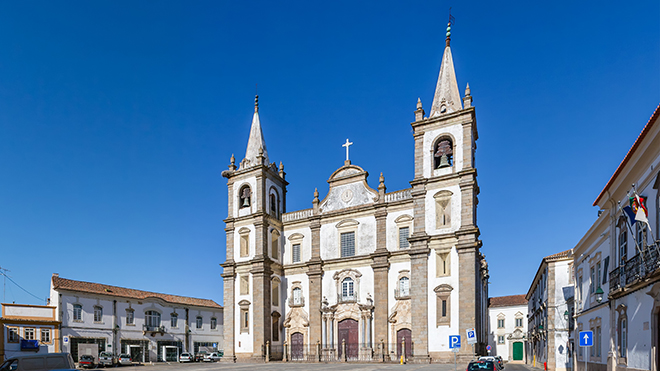
Very close, only 15km away, is the Pico de São Mamede, the highest point in the Natural Park. If there is time, it is worth going to Alegrete, a traditional Alentejo town of white houses enclosed between the town walls.
Now en route to Marvão, you pass through Portagem, where you can cool off in the pools. Take a break and taste the flavours of traditional Alentejo cuisine, together with one of the region’s fine red wines. It’s worthwhile to visit the nearby archaeological site of the Roman town of Ammaia.
Climbing up to Marvão
Anyone who knows Marvão will certainly say that you are at such a height that you can see the backs of the birds flying by. And it is quite true. Just go up to the Castle and enjoy the immense scenery.
This medieval walled town is one of Portugal’s treasures, where you are welcomed and feel a limitless tranquillity. Marvão is known for its narrow streets and picturesque recesses, its Manueline pillory, and its Gothic windows and wrought iron balconies.
You can visit the small Gothic convent of Senhora da Estrela and the Churches of Santiago, Espírito Santo and Santa Maria. The Municipal Museum is housed in the church of Santa Maria, where you can learn more about the history of this picturesque town. Since it was conquered from the Christians in 1160, until the wars of Independence between Portugal and Spain in 1640, it came to be regarded as the "most unconquerable stronghold in the whole kingdom." Today, however, it is a place of peace and quiet.
From Marvão, you continue to Castelo de Vide.
Arriving in Castelo de Vide
The castle surrounded by whitewashed houses stands out in the landscape and comes as a surprise. A greater surprise, however, is in the town itself, where one of the best preserved Jewish quarters in Portugal can be found.
You will be easily enchanted by the charm of the mediaeval setting. Visit the old synagogue, now a museum, and walk through the labyrinthine streets, where you will see the Jewish presence in the street names and the signs of the faith of generations of Hebrews on the granite doors. Rua das Espinosas, for example, refers to the famous 17th century philosopher, Spinoza, who was the son of an inhabitant of Castelo de Vide.
After climbing to the Castle, return to the centre, and enter the Parish Church of Santa Maria. Here there is a place where the Easter ceremonies mingle the two faiths, Christian and Jewish. There is also time to enjoy the fresh water in the springs you will encounter along the way, which is well known for its thermal properties.
The ever present Natural Park
Apart from its cultural and historical heritage, São Mamede Natural Park is a place of great biodiversity, where you can find wild boars, foxes, rabbits, badgers, wild cats and rare birds such as Bonelli's eagle, the symbol of this protected area, as well as Griffon vultures, hawks, short-toed snake eagles and tawny owls.
The landscape is very rich geologically and nature is expressed in a very particular way in the imposing formations of quartzite cliffs that draw your attention. Those who can will enjoy rambling or mountain biking across this special environment, using one of the marked routes.
It is best to reserve about 4 days for this tour, but it is easy to see that it is quite natural to want to stay longer.


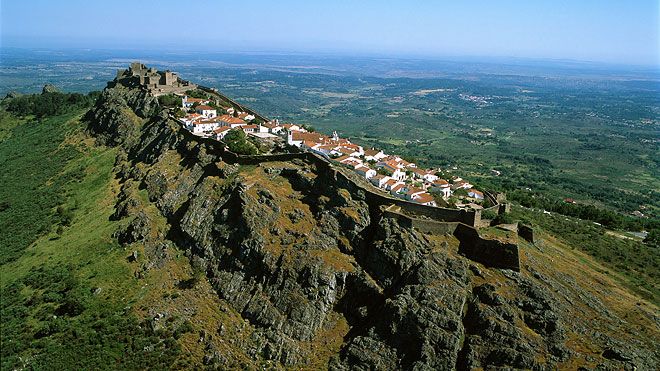






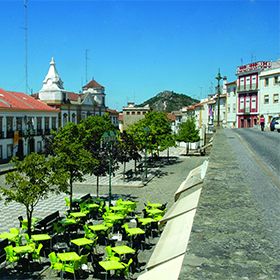
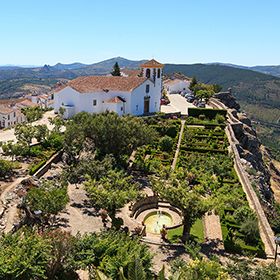
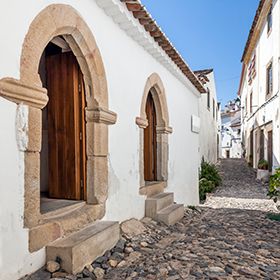
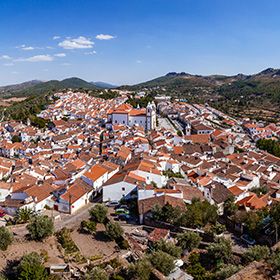


 Explore
Explore 

 Remember and Share
Remember and Share 


